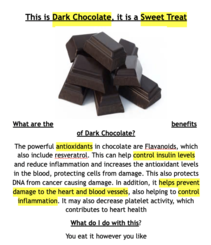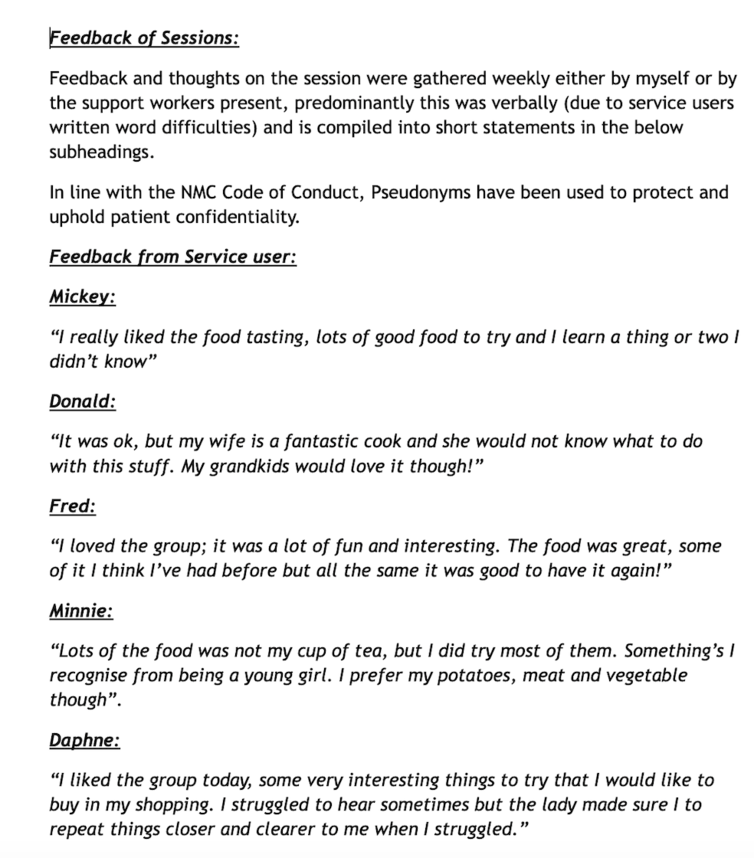During my time on my older adult placement I was placed in a LLAMs service which worked with services user who had a diagnosis of Mild Cognitive Impairment or Dementia. One of the non-pharmacological therapies that are offered to service users who present with a higher functionality is a 5 week course of Cognitive Stimulation Therapy. Throughout the 5 weeks the service users attend the centre for 1 day, 3 times a week and work with support workers on a set course of activates to aid management of cognitive symptoms and improve daily functionality.
In this session I proposed an idea to the group to involve a healthy eating taster and education session each week in the mornings of the group. The group agreed to this and thought it ‘would be a nice idea’ this would involve bringing in various food and drinks for the service users to sample.
The structure of the session was as follows:

The service users would be introduced to the food item in its whole form , such as an avocado, they would then be given the opportunity to see, touch, smell and eventually taste the food item. Once they had used all of their senses to hazard a guess of what the item is I would reveal its actual name. I then would go on to explain where they can purchase this food, how to prepare it and suggestions of what they could use it in conjunction with or substitute it for, and the health benefits of consuming this food item.
The purpose of not revealing the name of the food initially was to informally assess the services users’ visual recognition and naming, in concordance with elements such as in the MMSE (Mini Mental State Examination) and the MOCA (Montréal Cognitive Assessment). The sessions also prompted reminiscence, short term memory testing ( weekly reflections on previous sessions) and testing base line /decline in the 5 senses.
Each week I formulated an information leaflet with visual representation of the food they had tasted, instructions of how to prepare the food, and the health benefits of the food. This presented the opportunity for the service users to refer back to the session content at a later time, providing cognitive prompts if the service user could not remember what to do with the food or what a particular taste was associated with. The text was made large enough to read for those with visual limitations and key terms were highlighted for emphasise.
At the end of each session I would request verbal feedback of the how the service users found the session and if they would be interested in trying the foods at their leisure. Each week the feedback was predominantly positive, however some service users would be reluctant to engage at times and would be resistant to tasting particular foods that were out of their normal diet comfort zone. This was address by myself to the service user calmly and of appropriate manner, vocabulary and proxemics. I would explain that although they may not have come across these foods beforehand, and may not have had the means of acquiring them around their time of upbringing, this was a great opportunity to try these foods and maybe discover new tastes that they like or dislike. This would prompt group debates, which was seen a s a positive result as it encouraged reminisce and social interaction.
In the session each week I would begin with a recall session of the previous week, here I would ask the service users for any information they could remember about the previous session. This again allowed for an informal assessment of their short term recall and memory association. Each week would bring a variety of responses; mainly however it was evident that the service users had no recollection of the previous session.


